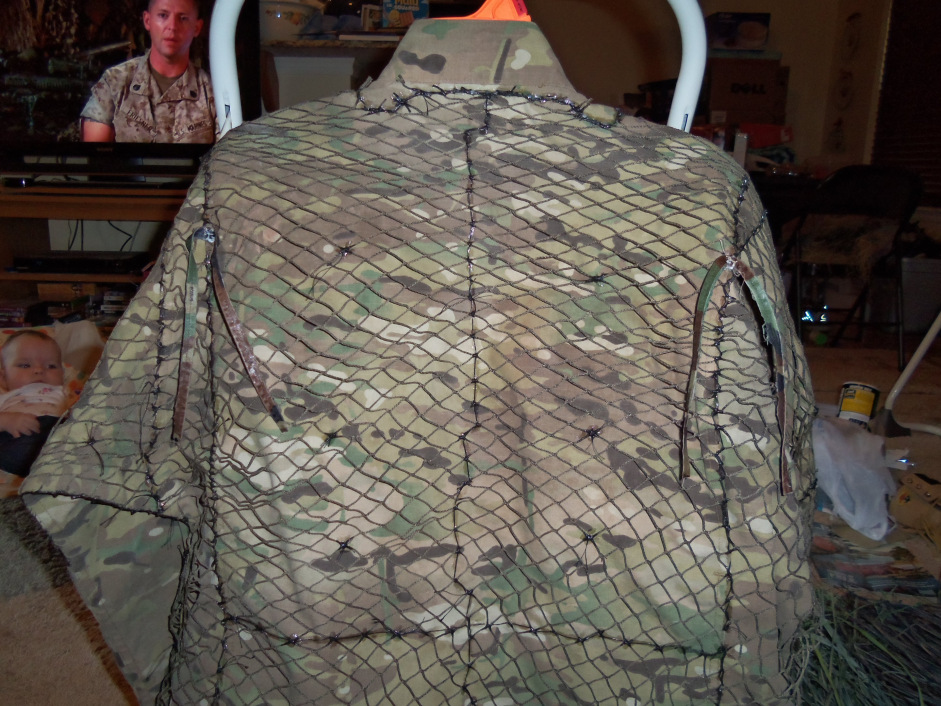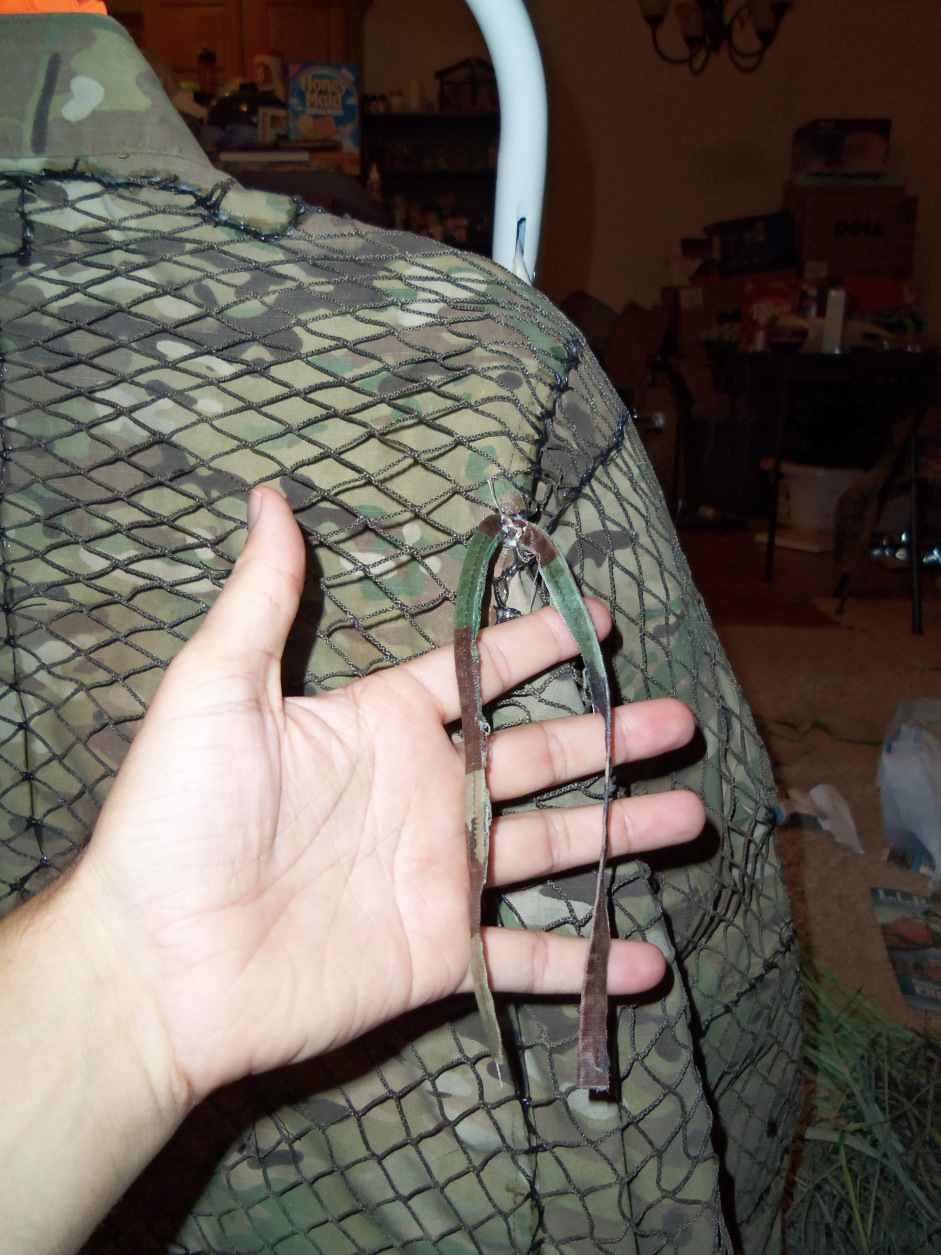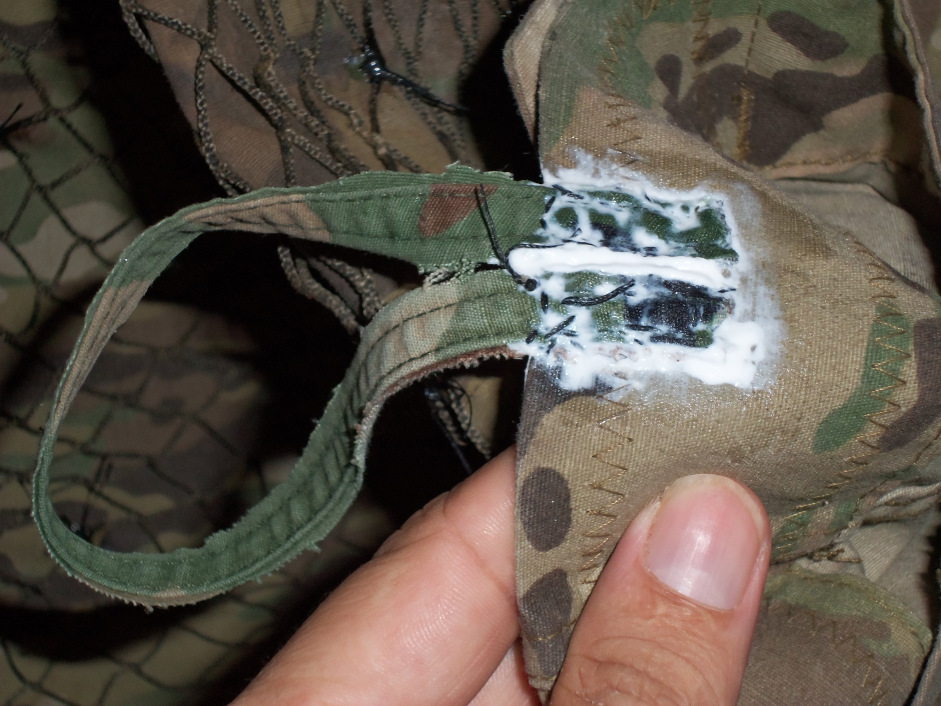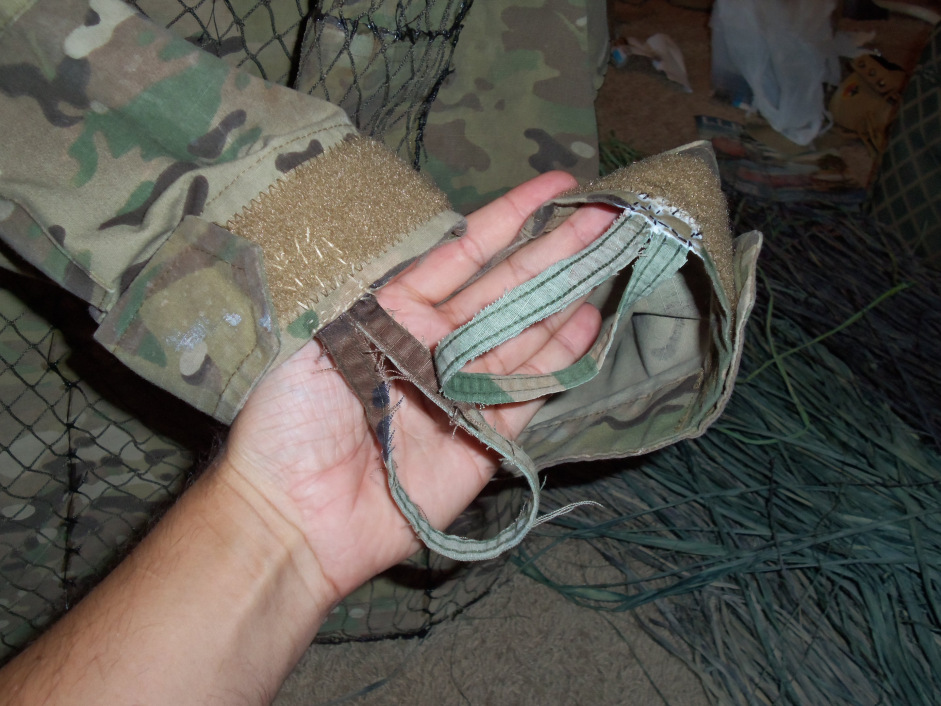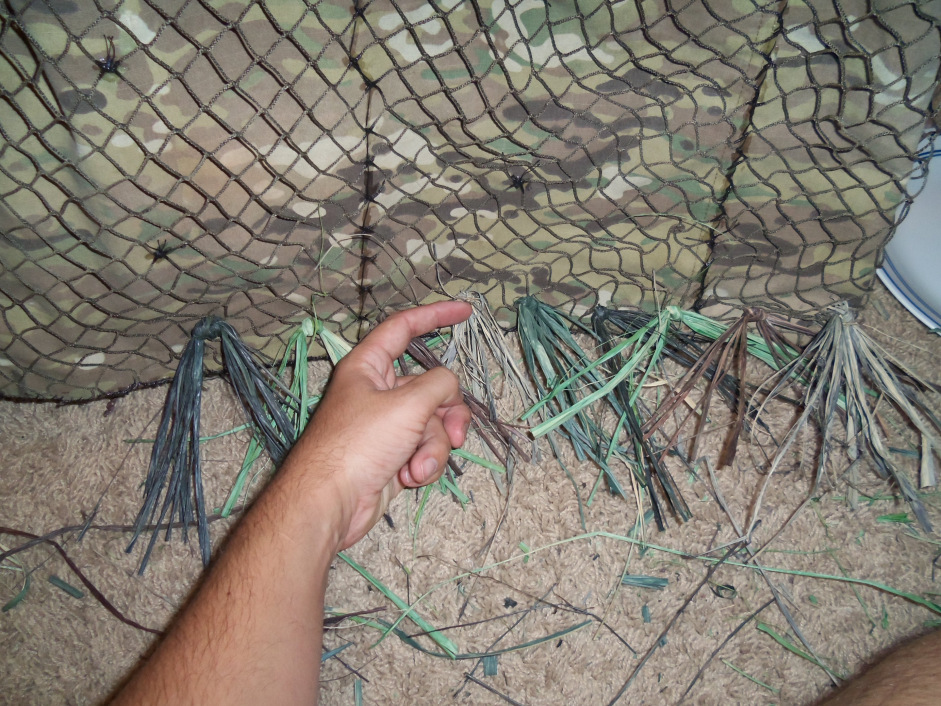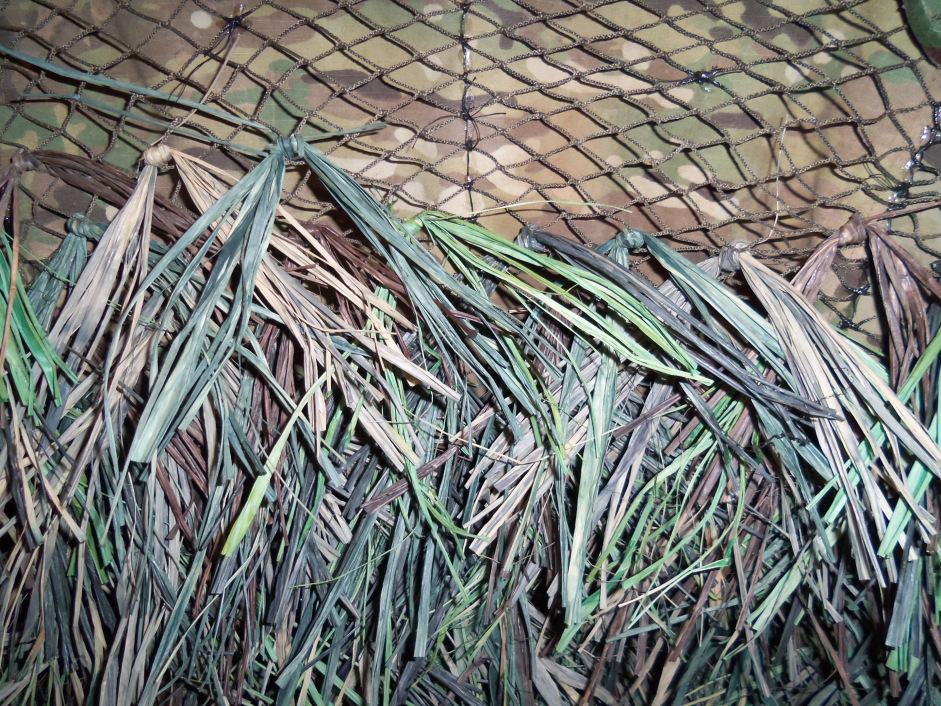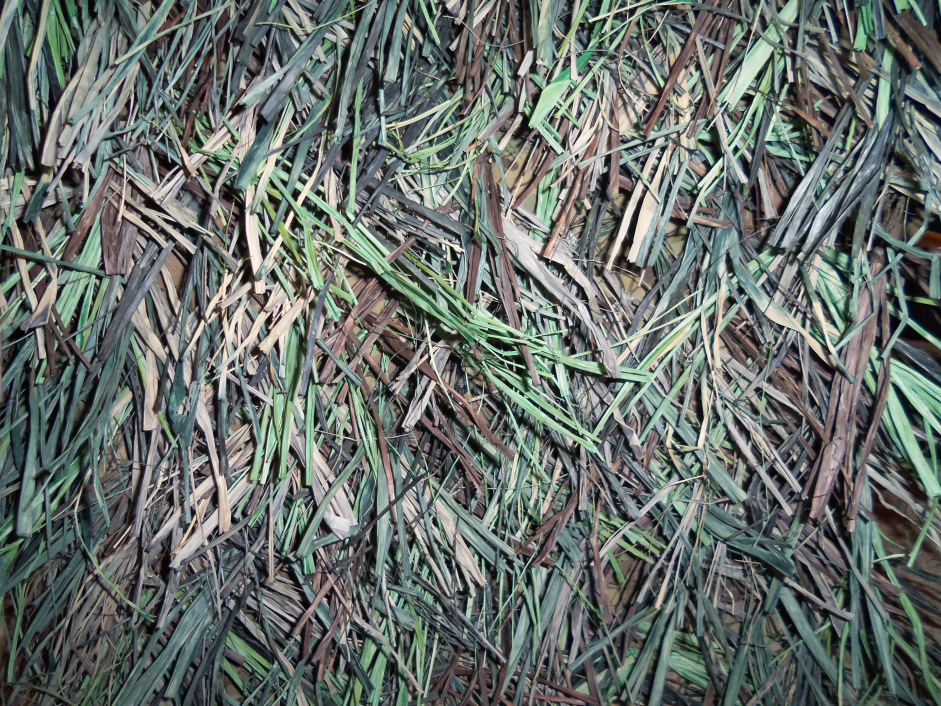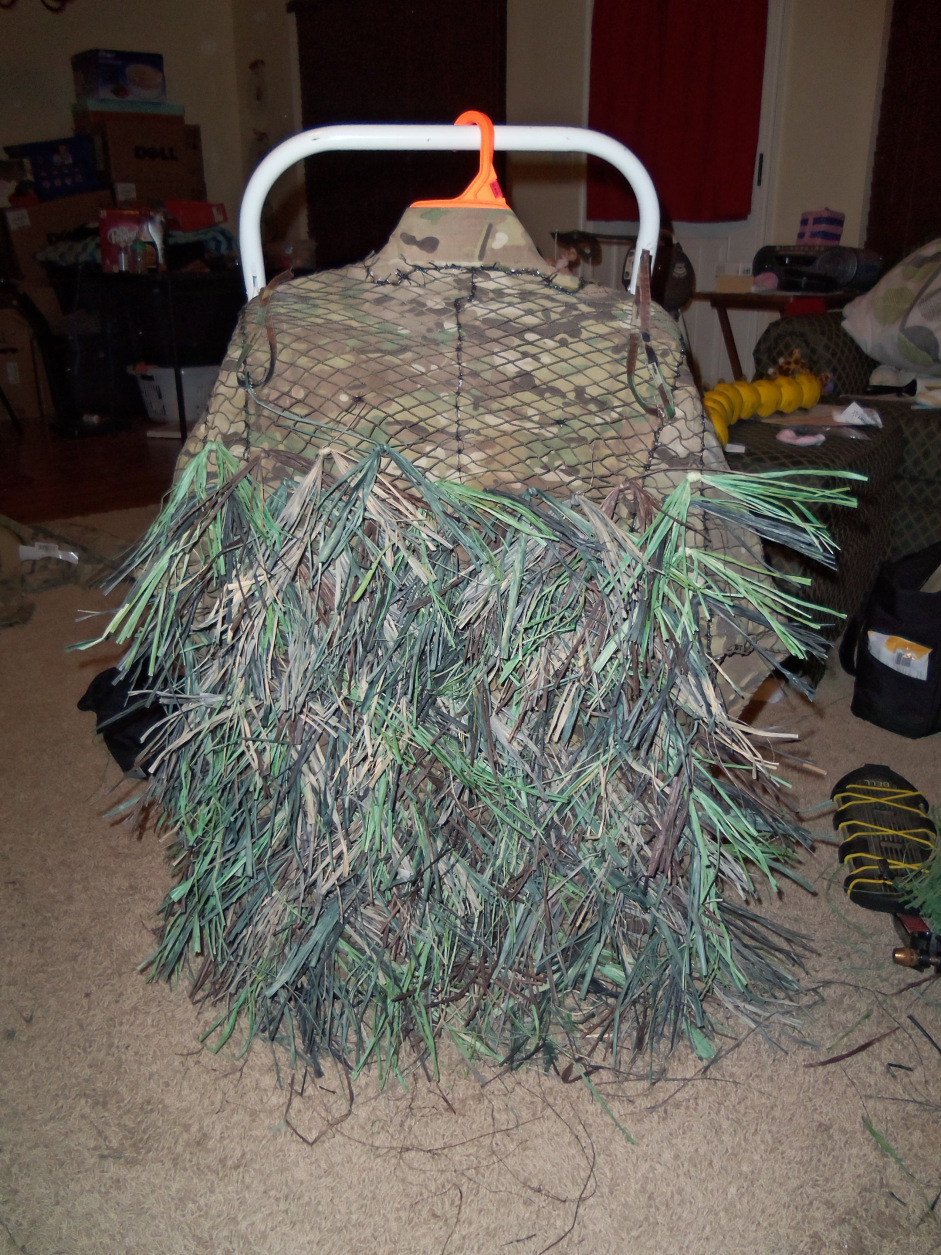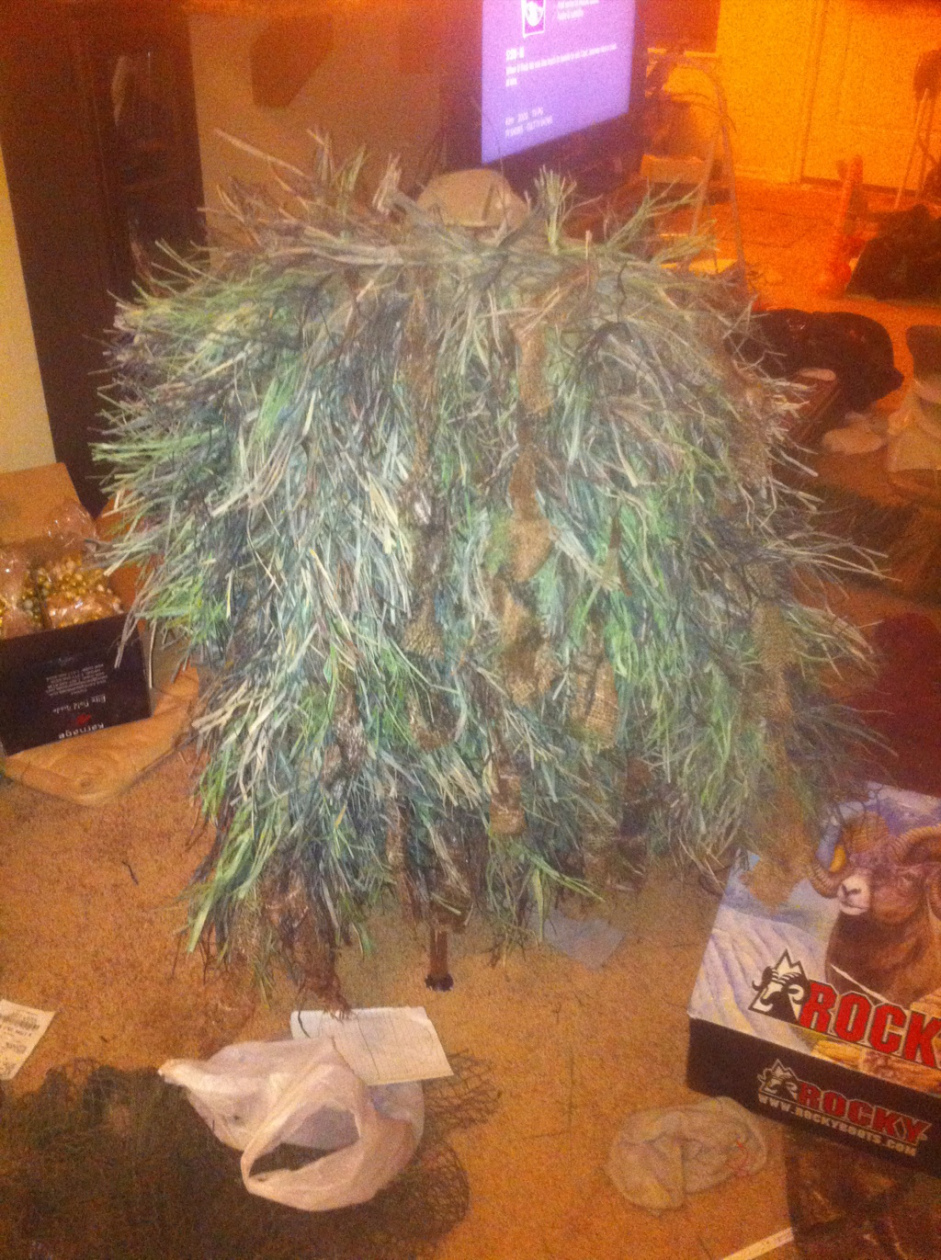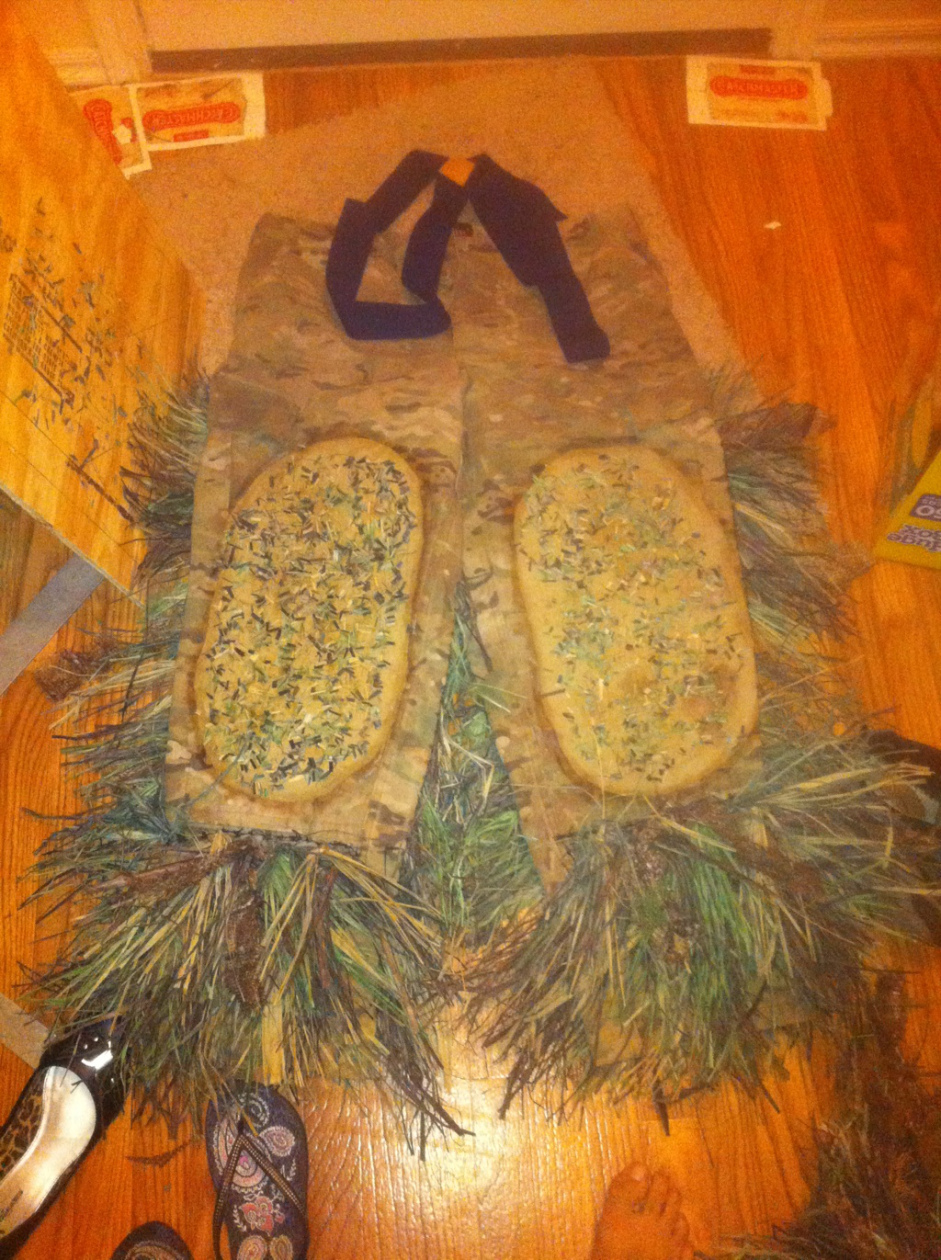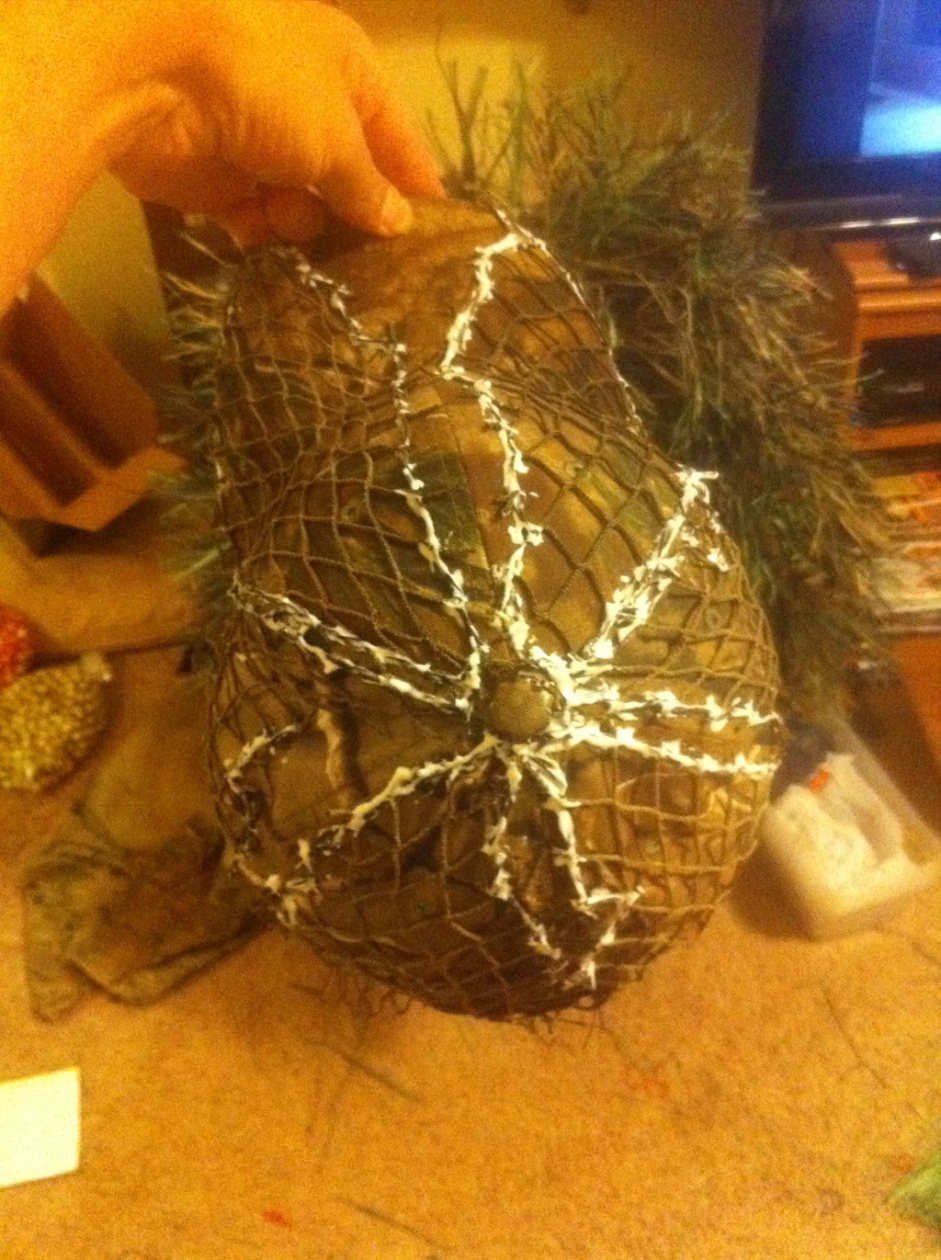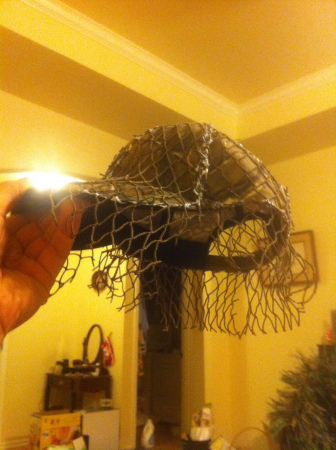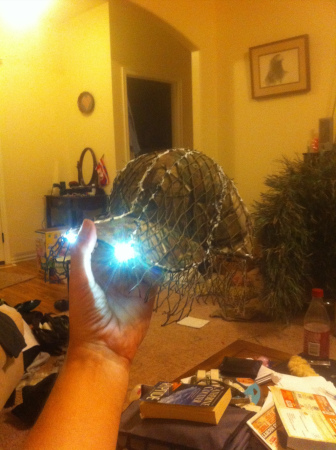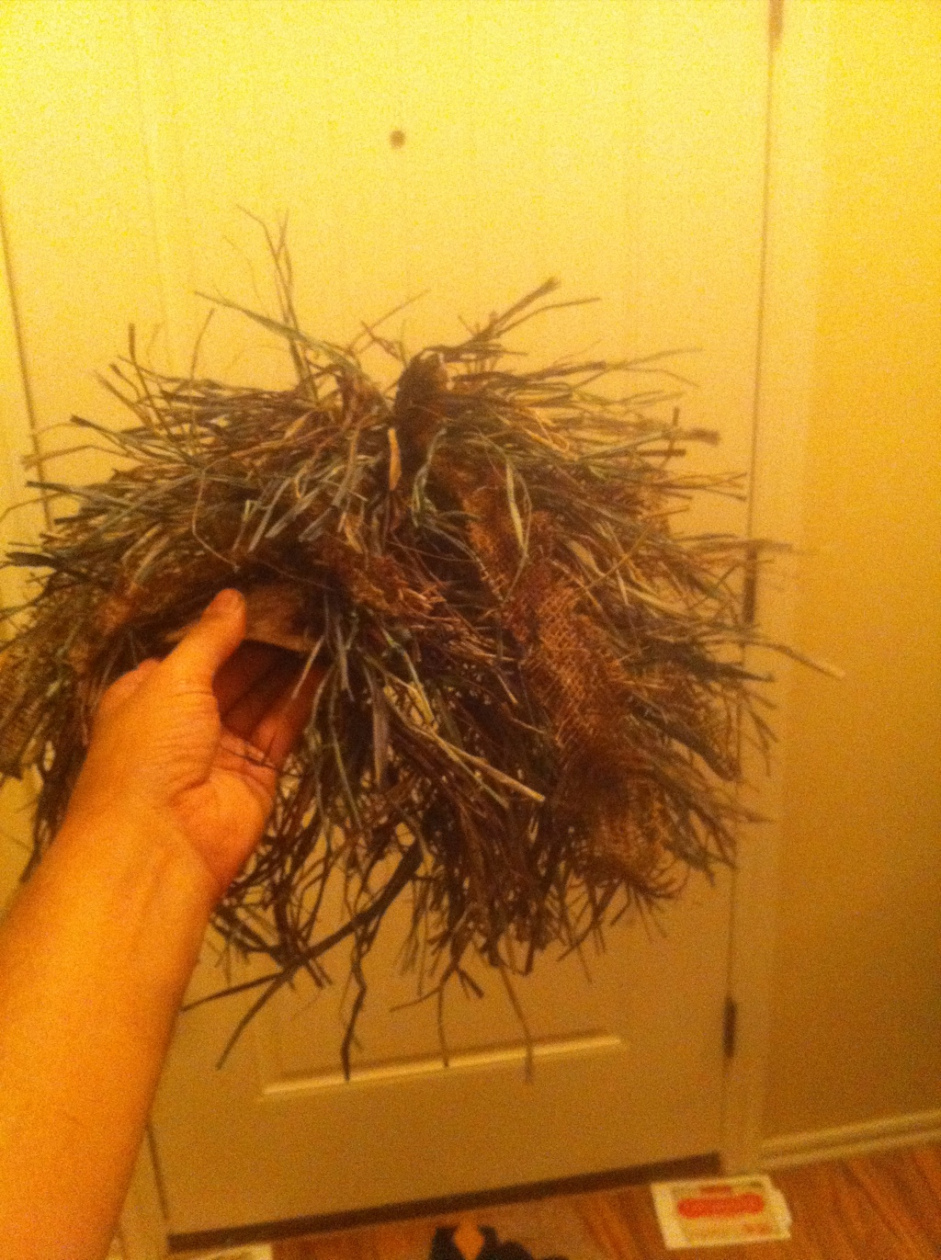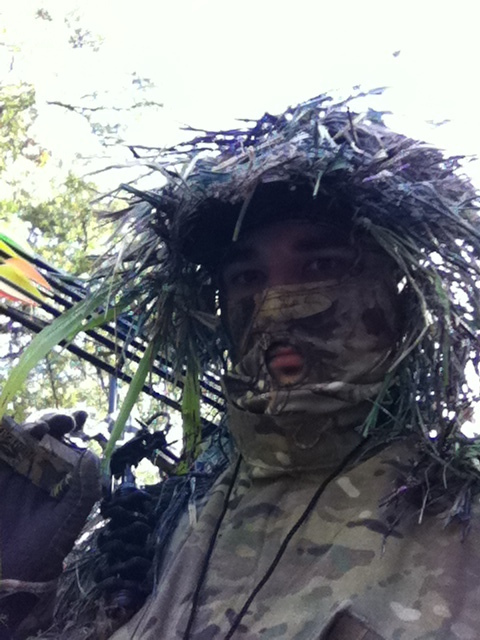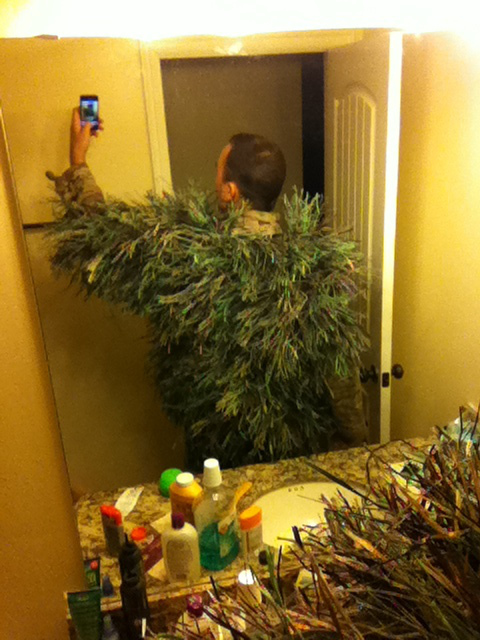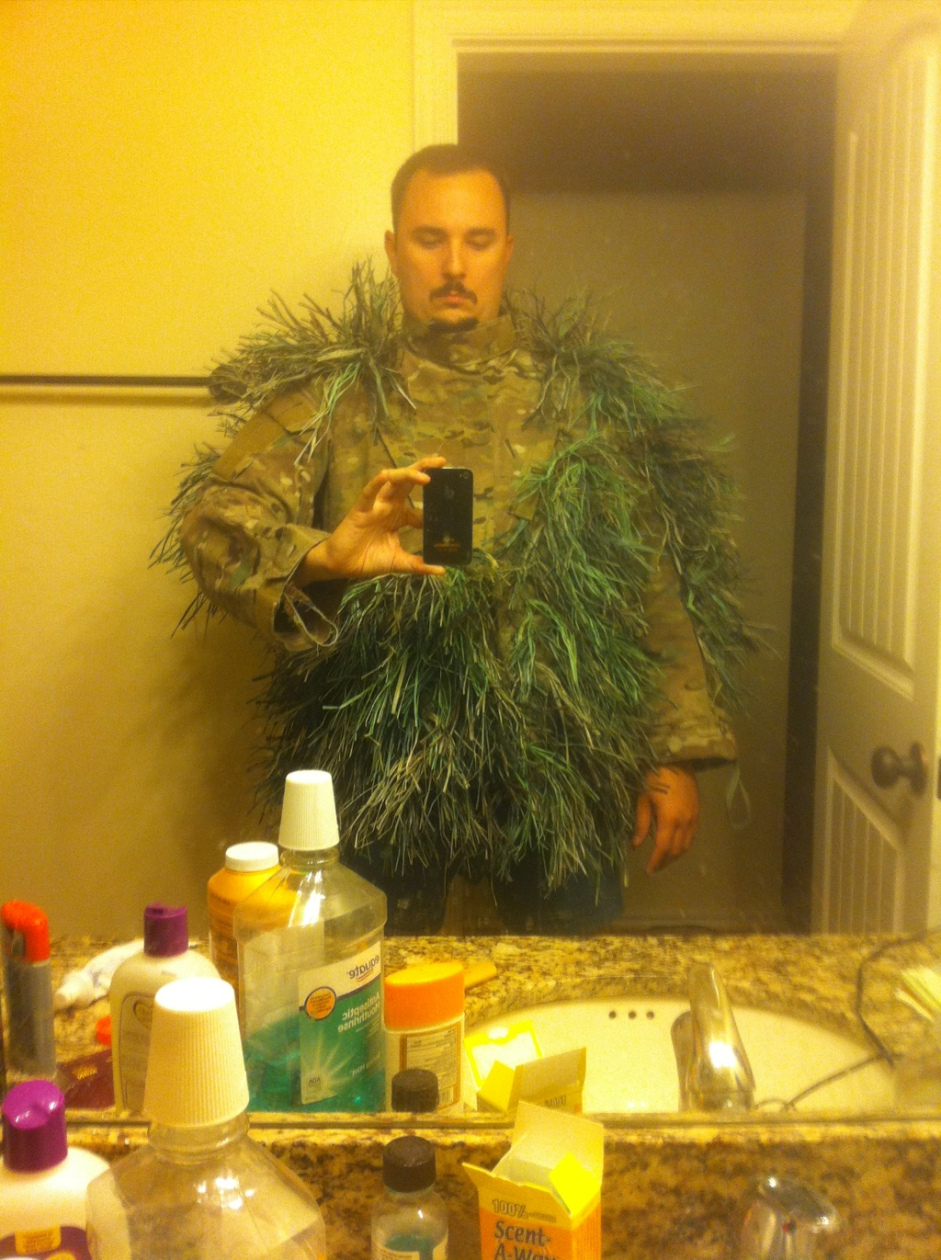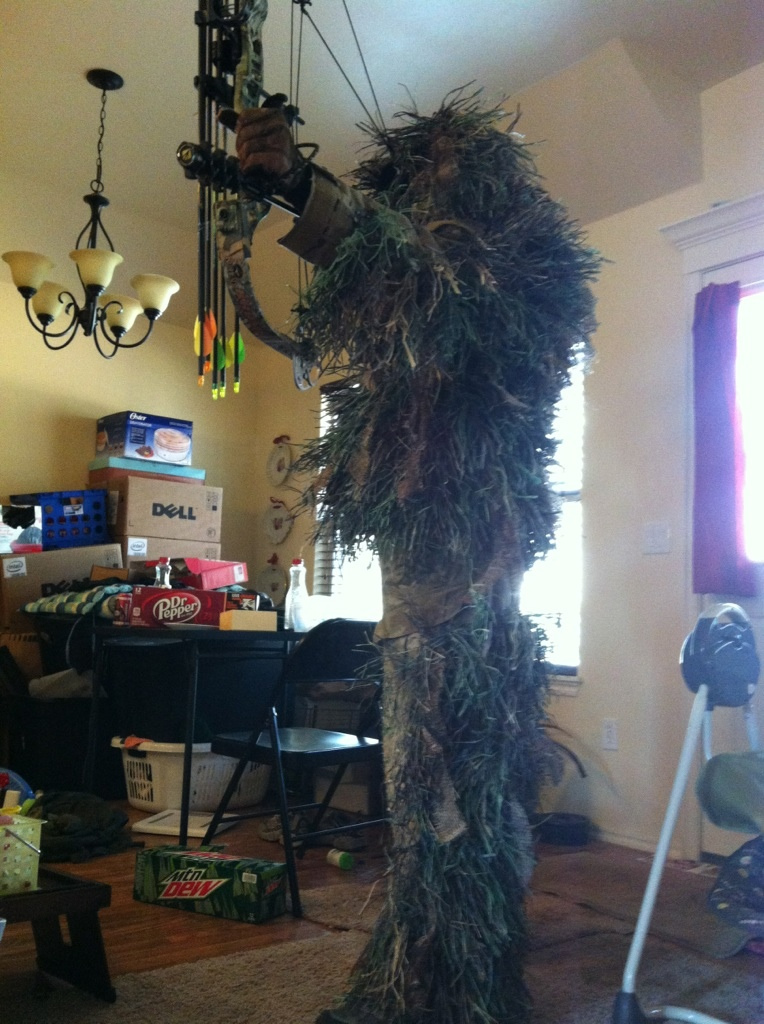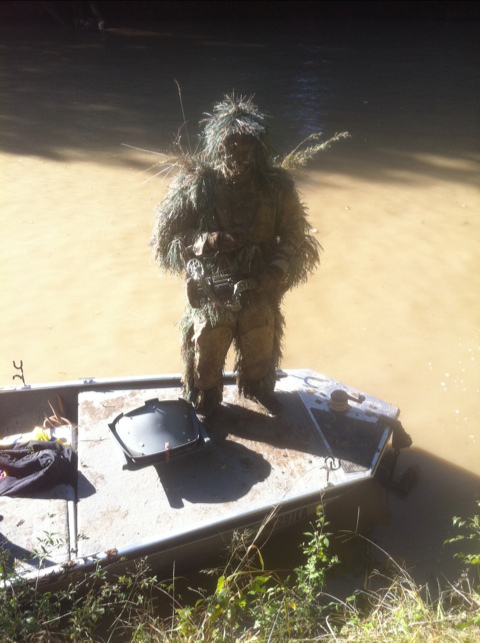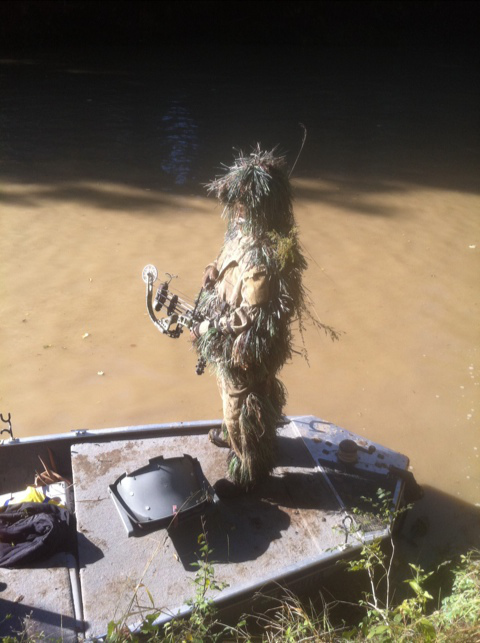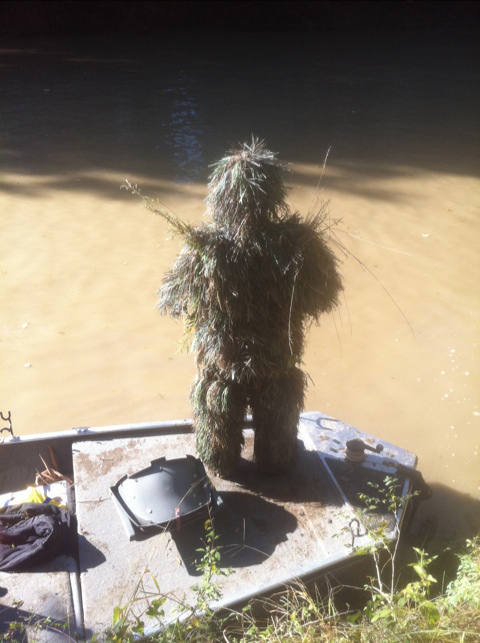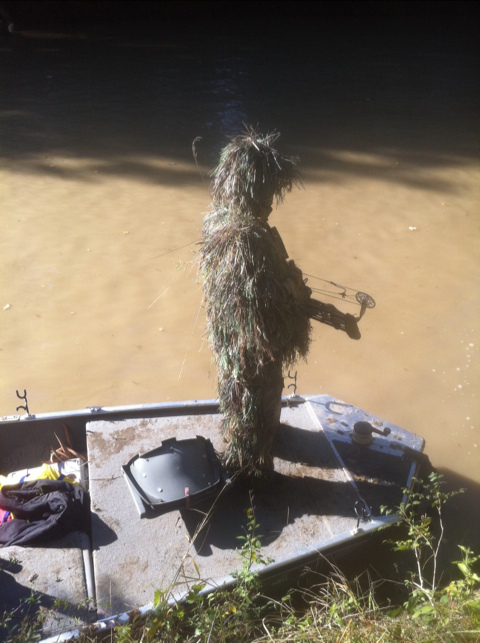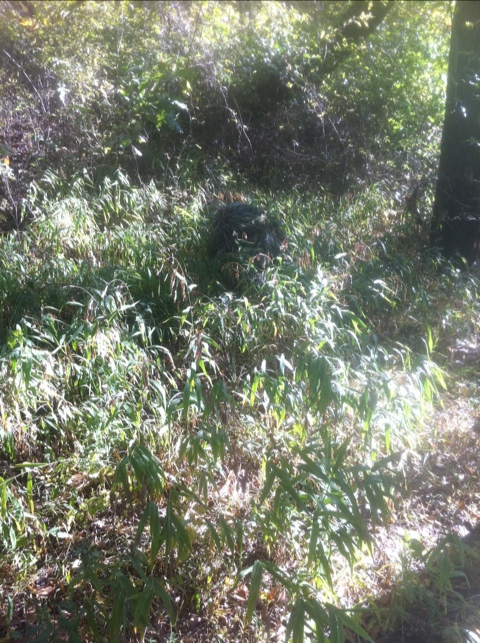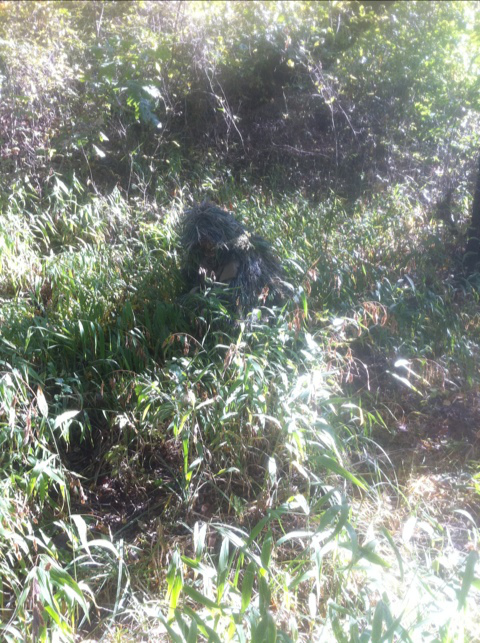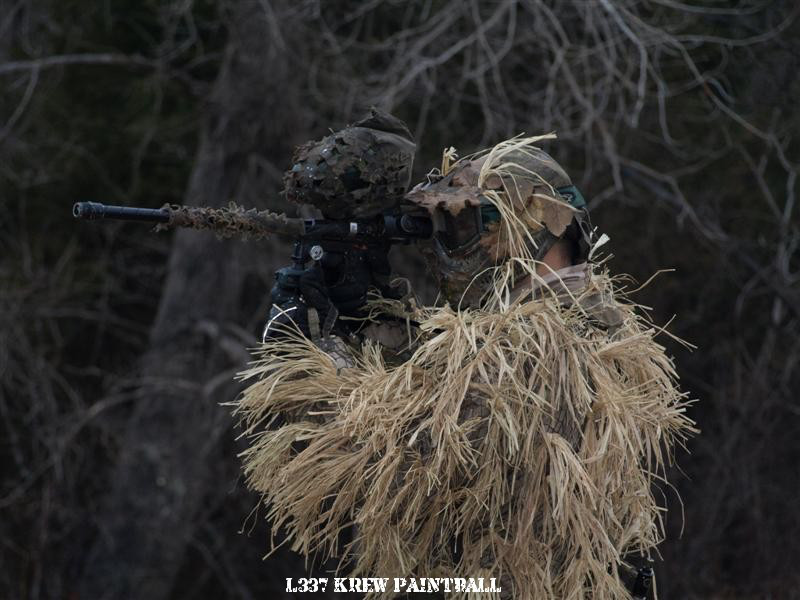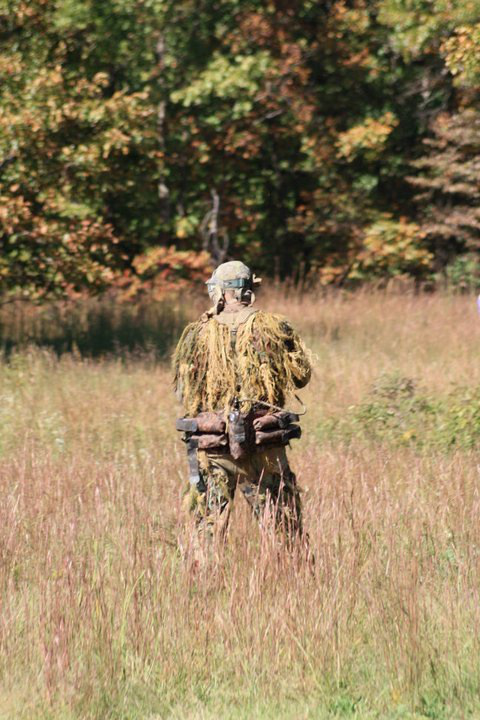This one's for all the archers out there. Original post on my website.
To build a durable ghillie you must use durable materials. Pictured here is palm tree raffia from Madagascar purchased from Hobby Lobby as Madagascar Grass.
Each hanging color you see here comes in a bag for $5. The dye packs are $2 each and can dye about 5 times the amount shown here. The salt cans (2) cost
about $3 each. Be sure to hose down the raffia right after hanging it up before it dries out.
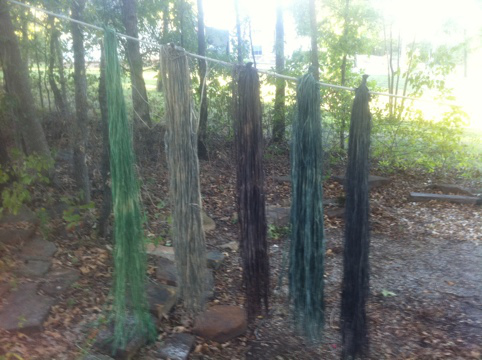
After allowing the raffia to completely dry using a pair of shears the grass is easily cut into manageable piles for later use. I wrap the piles individually with a
couple rubber bands when not in use.
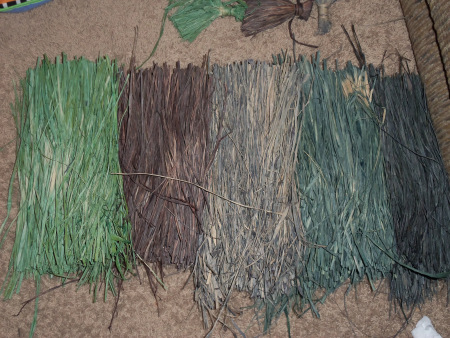
The BDU of choice is a high quality multicam with a velcro neck collar. The collar greatly helps with holding down the camo mask, shown later. The pants/jacket
shown here were purchased at an army surplus store for about $60 each.
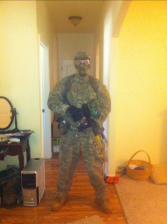
Many websites sell ghillie netting and ghillie kits with cheap netting prone to fray and rott. You can easily spot the garbage from the good stuff the garbage
looks like plain nylon twine tied together to form a net.It is soft and flimsy when handled.
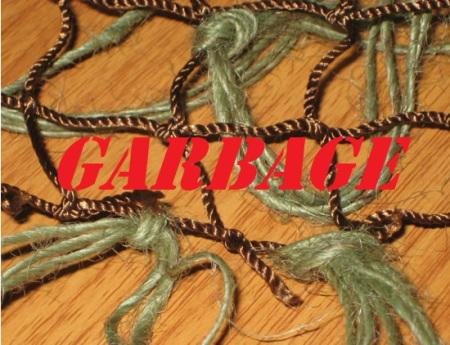
The good stuff is UV, abrasion & rott resistant interwoven nylon. Its strong, and has a life span longer than the BDUs you sew it to.It is stiff and not flimsy
when handled.
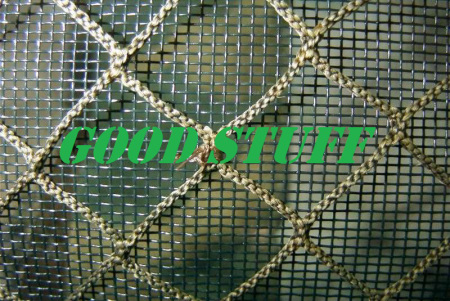
A lot of people suggest using dental floss to sew with, but in my experience it is a poor choice. Unwaxed dental floss is very prone to abrasion and fray.
It doesn't last very long even when glued. Waxed floss doesn't absorb the glue and ends up with very poor adhesion. Dont even think about heavy
fishing line.Having tried various things nothing stands up to the test of time and abuse like heavyweight nylon upholstery thread. It is abrasion, UV, mildew
& moisture resistant. It also adheres to glue like a champ.
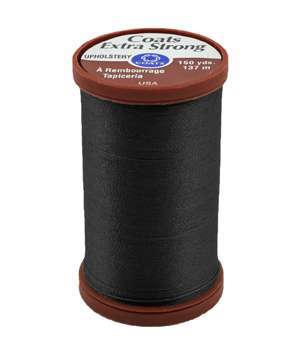
Ive tried several different types of glues, shoe glue, Goop, rubber cement, and various fabric glues. A product called Liquid Stitch is by far the reining
champ. It can be used indoors, doesnt give off any nasty fumes and adheres fantastically to threads and fabrics. Its also very flexible when it dries
and can be used to rubberize portions of a ghillie that need extra durability (thumb loops, tie straps). Cost $6 per tube, usually requiring 4-5 tubes
per suit.
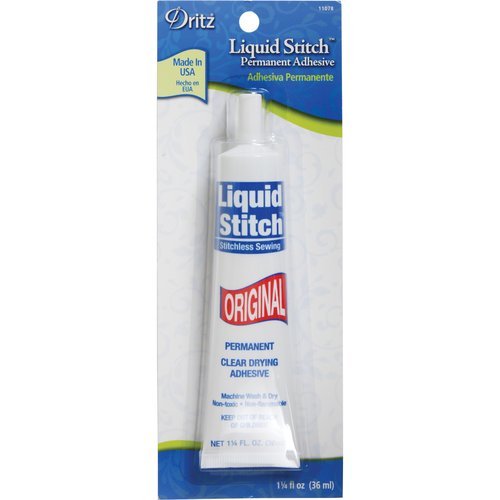
I use about 90% palm raffia and about 10% burlap strips. Walmart, Academy & pretty much any sporting goods store sells pre-dyed camo burlap
hunting blinds. Simply unfold it a bit and cut long strips out 5 at a time to mass produce strips. Cost $15.
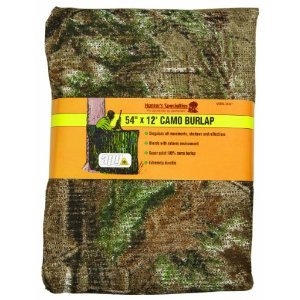
To build a durable ghillie you must use durable materials. Pictured here is palm tree raffia from Madagascar purchased from Hobby Lobby as Madagascar Grass.
Each hanging color you see here comes in a bag for $5. The dye packs are $2 each and can dye about 5 times the amount shown here. The salt cans (2) cost
about $3 each. Be sure to hose down the raffia right after hanging it up before it dries out.

After allowing the raffia to completely dry using a pair of shears the grass is easily cut into manageable piles for later use. I wrap the piles individually with a
couple rubber bands when not in use.

The BDU of choice is a high quality multicam with a velcro neck collar. The collar greatly helps with holding down the camo mask, shown later. The pants/jacket
shown here were purchased at an army surplus store for about $60 each.

Many websites sell ghillie netting and ghillie kits with cheap netting prone to fray and rott. You can easily spot the garbage from the good stuff the garbage
looks like plain nylon twine tied together to form a net.It is soft and flimsy when handled.

The good stuff is UV, abrasion & rott resistant interwoven nylon. Its strong, and has a life span longer than the BDUs you sew it to.It is stiff and not flimsy
when handled.

A lot of people suggest using dental floss to sew with, but in my experience it is a poor choice. Unwaxed dental floss is very prone to abrasion and fray.
It doesn't last very long even when glued. Waxed floss doesn't absorb the glue and ends up with very poor adhesion. Dont even think about heavy
fishing line.Having tried various things nothing stands up to the test of time and abuse like heavyweight nylon upholstery thread. It is abrasion, UV, mildew
& moisture resistant. It also adheres to glue like a champ.

Ive tried several different types of glues, shoe glue, Goop, rubber cement, and various fabric glues. A product called Liquid Stitch is by far the reining
champ. It can be used indoors, doesnt give off any nasty fumes and adheres fantastically to threads and fabrics. Its also very flexible when it dries
and can be used to rubberize portions of a ghillie that need extra durability (thumb loops, tie straps). Cost $6 per tube, usually requiring 4-5 tubes
per suit.

I use about 90% palm raffia and about 10% burlap strips. Walmart, Academy & pretty much any sporting goods store sells pre-dyed camo burlap
hunting blinds. Simply unfold it a bit and cut long strips out 5 at a time to mass produce strips. Cost $15.








